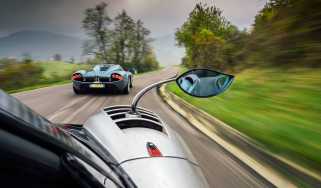Toyota GR Yaris – performance and 0-60 time
On-paper figures don’t relay this car’s cross-country pace
The punchy engine and four-wheel drive together enable the original GR Yaris to reach 62mph from rest in just 5.5sec. Top speed was an electronically limited 142mph. With the power and torque bump in the new car, those figures improve marginally, with 0-62mph arriving in 5.2sec, on the way to a 143mph.
When viewed purely in isolation, the three-pot engine’s vital stats don’t look that spectacular, even if the GR Yaris is admirably light (1280-1310kg, depending on specification) given the amount of technical content crammed into its small body. And if your only experience of a three-cylinder engine is a 1-litre Ford EcoBoost unit, you may be wondering if a triple can really cut it at this level.
Any such concerns are banished the moment you get the GR Yaris moving. Its engine is gutsy low down, but then really enjoys revving, and the subsequent surge of power throws the little car along at an amusingly rapid pace.
It always felt much stronger than the figures suggest; with the benefit of complete traction not a single one of those turbocharged horses is wasted, and the performance is further boosted by some nicely stacked gear ratios that aren’t too long.
The revised engine feels noticeably more urgent, with a boostier feel. You can hear the turbo whooshing, on- and off-throttle, and see its response visually on the new digital instrument panel, where a neat graphic shows the turbo’s pressure and response in real time.
The six-speeder feels even better than before; GR’s engineers have obviously been hard at work because somehow the shift is swifter, sweeter and less baulky – and it’s not like it was bad before. There’s still a switchable rev-match function to blip the throttle automatically on downshifts (something it does neatly, and without unnecessary theatre – just the right amount of revs, no more, no less) but it’s still possible, and fun, to do it yourself if you prefer. The auto option is an eight-speed torque converter with shorter ratios, and though you lose an element of interaction, it does give the car an even greater sense of urgency. The shifts aren't as crisp as a DCT, but with no pause between gears the Yaris feels more relentless, and it's easier to carry speed into braking zones and condense your downshifts into a shorter space. Ultimately, the manual suits the GR's character more, but the auto plays into its ability to maximise every drop of the available performance.




